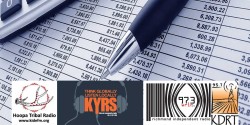Budget planning is one of the keys to success for community radio stations. You will need to assess your revenue sources, account for all expenses, pay careful attention to your bookkeeping and be prepared for unforeseen circumstances. Some stations rely on staff-led budgeting, others divide up responsibilities among various committees. Whether you hire a bookkeeper, set up Quickbooks or rely on well-trained volunteers, accountability is the name of the game. Your Board or Tribal Council should offer oversight, then everyone needs to work together to meet your financial goals. I asked friends with experience leading four unique community radio stations around the country about the timeline for their budget planning, who is involved, and typical funding levels. This is how the pros do it.
The Budgeting Process
Your budget is the central point of focus for the Board of Directors. The plan for your organization becomes accountable through your budget. While creating a budget, how successful you are with short-term priorities will determine your long-term success. It will get easier over the years, but start out by budgeting for rent, utilities, audio equipment, computers, wages, taxes, underwriting commission, office supplies, travel, insurance, legal fees and engineering.
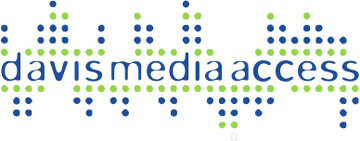 KDRT-LP in Davis, CA is a volunteer-run LPFM operated from inside Davis Media Access, which also manages public and educational access TV channels. “DMA staff has little-to-no time actually budgeted for KDRT administration, but budget oversight must get done,” says executive director Autumn Labbe-Renault. Staff develops the budget and presents it in draft form at the May Board meeting, then finalizes in June. The Board asks questions, but the staff determines funding priorities.
KDRT-LP in Davis, CA is a volunteer-run LPFM operated from inside Davis Media Access, which also manages public and educational access TV channels. “DMA staff has little-to-no time actually budgeted for KDRT administration, but budget oversight must get done,” says executive director Autumn Labbe-Renault. Staff develops the budget and presents it in draft form at the May Board meeting, then finalizes in June. The Board asks questions, but the staff determines funding priorities.
At all-volunteer WRIR-LP in Richmond, VA budgeting is divided up by department. According to former Board president Liz Humes, each committee prepares its own budget and then the Board compiles the budget drafts into a station-wide document. The board then reviews the total and works backward, reviewing each of the department’s line-items to determine affordability and accuracy. Occasionally the board will delete a committee’s budget request because of cost or practicality.
She points out, “some committees make presentations to the treasurer and the president, explaining proposed projects, but most committees don’t.” The Board announces the budget deadline three months in advance and the cycle runs July through June.
KYRS station manager Lupito Flores prepares the budget with help from the Board treasurer, based on expectations from previous years as well as new goals set by the Board. “Don’t count on grants,” he advises. “Focus on memberships and major donors.” Typically the draft budget at the Spokane, WA station is seen by Board members in December, then approved in January in time for the start of the fiscal year.
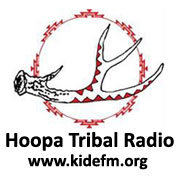 At KIDE in Hoopa, CA station manager Joseph Orozco creates each annual budget himself, submitting his proposal to the Tribal Council in June. The new budget year begins in October. “Nonprofit radio is a business, not a club,” he asserts. “Pay yourself first, from whatever unrestricted money you’ve earned. What money is left over you use to operate the station.” He says one key is that he doesn’t do projections, “I stay in reality. What do I know I have in hand?”
At KIDE in Hoopa, CA station manager Joseph Orozco creates each annual budget himself, submitting his proposal to the Tribal Council in June. The new budget year begins in October. “Nonprofit radio is a business, not a club,” he asserts. “Pay yourself first, from whatever unrestricted money you’ve earned. What money is left over you use to operate the station.” He says one key is that he doesn’t do projections, “I stay in reality. What do I know I have in hand?”
Accounting
Nonprofit accounting is different from for-profit accounting because for-profit businesses have equity. Your nonprofit has a general fund balance which is the equivalent of the net worth of a business, but accounting for restricted and unrestricted funds can take manipulation in an application like Quickbooks, if you use one. Restricted funds include grants, contracts and donations to a specific capital campaign. Unrestricted funds include cash donations, memberships, underwriting and money raised at benefit events.
Set up your chart of accounts, the basic financial outline for the organization, so that you can track your income and expenses. It is not one of the more exciting parts of making radio, but the board should be in the habit of doing monthly reviews of the station budget. (A nonprofit owning its own building or other property is an example of an asset that contributes to the fund balance, but the same as equity.)
KDRT-LP’s Autumn Labbe-Renault says “we keep track of all expenses monthly, keep receipts for everything and have finance policies in place.” The director of operations writes checks and does reconciliations using Quickbooks. She warns that although Quickbooks is cost effective versus paying a bookkeeper, it is time consuming and can be a steep learning curve. The executive director reviews financials and signs checks. Both of them report to the board for approval of budgets, reports, etc. Once a year Davis Media Access pays a local certified public accountant to review the financials.
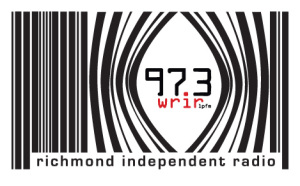 WRIR-LP has been paying a bookkeeper and an accountant part-time for many years. The bookkeeper pays invoices and allocates the expenses to the budgets of corresponding departments. Liz Humes stresses that unforeseen or off-budget purchases “should have prior approval.” If the purchase is large, then a request goes to the treasurer who approves it and submits it to the bookkeeper.” Any unanticipated expenditure over $500 goes to the board for approval. For a more complete picture of their financials, go here: http://giverichmond.guidestar.org/NonprofitProfile.aspx?OrgId=1050825
WRIR-LP has been paying a bookkeeper and an accountant part-time for many years. The bookkeeper pays invoices and allocates the expenses to the budgets of corresponding departments. Liz Humes stresses that unforeseen or off-budget purchases “should have prior approval.” If the purchase is large, then a request goes to the treasurer who approves it and submits it to the bookkeeper.” Any unanticipated expenditure over $500 goes to the board for approval. For a more complete picture of their financials, go here: http://giverichmond.guidestar.org/NonprofitProfile.aspx?OrgId=1050825
KYRS uses the online version of Quickbooks. “It’s a good idea to have lots of systems and protocols in place to track purchases, train volunteers, and know who is doing what,” says Lupito Flores. “We depend on a lot of volunteers for bookkeeping and membership management so everything needs to be on paper and spelled out.” KYRS uses ebase for the membership database, which he says is free and easy to use. “The more you can track income and expenses, the easier it will be to budget for next year.”
KIDE takes advantage of the Hoopa Tribe’s fiscal department. “They handle our accounts and do audits for us,” Joseph Orozco says. “All of our invoices and receipts go to them. They handle money that comes to us. We send them purchase orders and they keep track of all the bookkeeping.” The CFO creates the budget sheet for the whole tribe, then all the departments talk it over with the tribal council.
Revenues
There are a number of factors that will impact your income, including the power of your FM signal, the size of your area’s population, and how hard you work to get the word out about what your station contributes to the community. The majority of community radio stations rely on membership drives carried out over-the-air for about a week, typically twice a year.
Underwriting and grants tend to be the other biggest sources of income. Get creative. Regular small fundraising events can help raise your profile, and an annual signature event can bring in some big bucks. Keep in mind, however, that it can be risky to spend a chunk of money for a fancy venue or a big-name act.
Davis, California is home to about 68,000 people. KDRT-LP reaches a 3.5-mile radius that encompasses much of that population. Autumn Labbe-Renault figures Davis Media Access raises about $25,000 worth of donations each year and feels that is a large amount considering their relatively small potential audience. “We do not subscribe to Arbitron because it’s too expensive. Online downloads and listening numbers are rising, but can be hard to quantify as we work to resolve how many pings are from ‘bots’ and how many are real.”
She makes revenue projections based on what was budgeted and spent the previous year, adjusted for inflation. For many years their annual ‘BBQ on the Backlot’ fundraiser featuring live bands and beer kegs was key. Their current focus is on smaller events throughout the year.
Richmond, Virginia has a population of 200,000 people and Liz Humes says WRIR-LP “guesstimates” their potential listenership is about 300,000. “We have about one thousand contributors during pledge drives, annually,” she says.
The station is unique in that at the time of its launch WRIR-LP had already solicited $50,000 in annual underwriting contracts. “I was a publisher before becoming a radio person,” she points out. “We used the print advertising model of advertising contacts to determine what the year was going to look like. With a foreknowledge of $4000 per month coming in from underwriting, I knew the station was going to be okay.”
Raising the money to launch a station is different than projecting annual revenues. “Right now, we’re bringing in about $80,000 annually from pledge drives. This number directly correlates with outreach and awareness.” The station’s anniversary party each February brings in thousands of dollars.
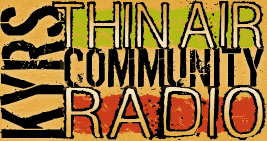 KYRS recently expanded its reach immensely with the construction of a new full-power tower and new transmitter. About 300,000 people far beyond the studio location in Spokane, Washington are covered by the new signal and translator channel combined. Lupito Flores says the membership numbers are rising from 800 in the direction of 1000. He calculates, “you can safely guess that each year you are on the air you can hope to get a 3 percent increase in membership.” The Board projects that each on-air membership drive will bring in $20,000, following the standard model of asking for money in the Spring and Fall. The annual anniversary party each November can be expensive to produce, but it always raises big bucks.
KYRS recently expanded its reach immensely with the construction of a new full-power tower and new transmitter. About 300,000 people far beyond the studio location in Spokane, Washington are covered by the new signal and translator channel combined. Lupito Flores says the membership numbers are rising from 800 in the direction of 1000. He calculates, “you can safely guess that each year you are on the air you can hope to get a 3 percent increase in membership.” The Board projects that each on-air membership drive will bring in $20,000, following the standard model of asking for money in the Spring and Fall. The annual anniversary party each November can be expensive to produce, but it always raises big bucks.
KIDE does not do fund drives. “We have not engaged in on-air fundraising in a long time,” Joseph Orozco says. “I see the need to restart that effort again, with all the threats to public broadcasting. We need to make contingency plans should we lose 47% of our operation budget.” He is referring to the Community Service Grant from the Corporation For Public Broadcasting, which funds one staff position and pays for content. The tribal budget allocation covers three full-time staff.
Typical Operating Expenses
Most businesses pay expenses first and consider whatever is left over profit. KIDE’s Joseph Orozco says you have to pay your staff first, because “one quickly understands the limits of the operation and how to tweak their actions to improve the content, to increase asset value, which is more likely to increase income.” Your team is essential, even if you can’t afford to pay anybody.
Of course, there can be no radio signal without a tower and antenna, plus a transmitter and a mixing board. You will need microphones, computers, CD players and turntables. All of these items and everything else beyond the signal flow (like insurance, legal support, broadband Internet and office supplies) should be in your budget.
The overall Davis Media Access operating budget is $400,000 but they stopped separating out KDRT’s costs. “It was easier just to make sure KDRT gets what it needs,” Labbe-Renault says. Accounting for a percentage of square footage occupied, percentage of insurance costs plus hard costs like licensing fees and equipment replacement, she calculates KDRT’s annual operating expenses to be about $25,000.
After many years they have added a programming support staffer six hours per week and an underwriting sales rep, paid commission. Labbe-Renault points out that although it’s moving in the right direction financially, “KDRT’s never actually managed to cover all its costs; the station makes sure to cover those costs through unencumbered revenue streams.” On the other hand, the radio station “helps us out enormously with our fund raising.”
Even without a full-time staff person, the annual budget at WRIR is $117,000. “We base our budgets on the previous year’s revenue,” says Humes. “So far, we’ve never come up short.” WRIR is functioning beautifully without paid staff, she says, allowing more volunteers to be incorporated into station operations.
“It forces us to be better organized. That said, without a paid staff person, it feels like chaos could erupt at any time and all of our spinning, well-worn plates could come crashing down.” If WRIR received a windfall of $100K, Humes says she is fairly certain the board would apply the bulk of the money toward a full-time general manager.
Before marking its eigth anniversary with an expansion to full-power in November 2011, KYRS had annual expenses of $103,000. Going full-power means rising operating costs, but also that the station reaches many new listeners. The KYRS Board has a strategic plan in place to increase from one full-time station manager and two other half-time staff to a team of 5 full-time staffers and additional part-timers. Meanwhile, according to Flores, the board gets financial reports at each monthly meeting, “and if some income stream is down, it’s noted, and we all work to make up the shortfall.”
The total annual budget at full-power community radio station KIDE is $224,000. 85% is made up of staffing funds from the Hoopa Tribe and the Community Service Grant from CPB. The reservation is isolated and the operation resembles many LPFMs aside from the CPB money. Because the grant includes restricted funds, Orozco uses it to buy programming. “I’m willing to pay people for good material that I can use.” They also take advantage of satellite-based content like Native Voice One. KIDE benefits from free rent and a free facility, thanks to the Tribe. Orozco stresses: “My main thing is as long as I have money to pay the staff for the whole year, I can always adjust on anything else.”
Fluctuations & Wiggle Room
What do you cut when the revenue doesn’t meet projections? How should you spend the money if a major donor emerges and cuts you a fat check? Memberships, grants, underwriting, events and other funding streams that nonprofit community radio stations depend on vary from month to month, and from year to year. You have to be ready to wiggle.
Davis Media Access budgets for travel in one lump sum and then also aims high on legal and engineering. The radio station benefits tremendously from its home inside the TV studios, where rent, utilities, phone and postage are taken care of. Plus, about 85% of unallocated fundraising at DMA goes to the radio station. For equipment, Labbe-Renault says, “we are very thrifty but spend a couple thousand each year.” All-volunteer operations are hard, but they give people a reason to feel vested. Bridge-building, networking and outreach add to KDRT’s capacity.
WRIR’s committees always shoot high when asking for money, according to Humes. The Board tends to accept their requests, although committee heads who inflate their budgets unrealistically usually have their inflation questioned and then revised to a realistic number. Having a lawyer on the board means all legal advice is pro bono. Humes was amused with this particular question: “Travel? Ha, good one!” At her station, Humes says equipment cost fluctuates the most. “We can predict which piece will need upgrading, but unforeseen circumstances always arise.”
With the KYRS budget process, the more detailed the better, so fine-tuning predicted expenses is always helpful. Grants and membership income always fluctuate, so Flores prefers to be conservative on those line items, as well as on legal and engineering fees. He says, “if near the end of the year it looks tight, we tighten our belt and spend less on supplies, equipment, computer repair, maintenance, ads, postage, etc.”
“Conferences and travel might fluctuate,” says Orozco at KIDE. “Sometimes I put in more engineering than I think I will need. I have a couple of the same people I’ve been using for years, they don’t charge as much.” One of the first things to get cut, when necessary, is advertising in the newspaper or other publications. He doesn’t do small itemized budgeting for paper, ink or other office supplies. Anything over $2,500 is a capital investment. “We haven’t bought a major piece of equipment in a long time,” he says. “Right now I’m looking forward to new antenna bays, about $3,000 each.”
Advice For New LPFM Applicants
From Native country to the public access television scene to mid-size cities like Richmond and Spokane, community radio adds to the quality of life. These stations succeed in part by providing air time for underrepresented views and independent music. There is nothing more important than the fact that you are local. When you introduce content like a live morning show, concert calendars, spotlights on important issues, and credible journalism you can engage with your audience better. Everybody is a stakeholder.
From the founders to the staff, from volunteer deejays to local musicians, from underwriters to the community groups who run public service announcements on your airwaves, these are the people who make your radio station what it is. Very few will be involved in the budgeting process, but your ability to get organized and then follow through will impact them all. The Budget-Building Book For Nonprofits by Murray Dropkin and Bill LaTouche is one book that stations have found useful.
Autumn from KDRT-LP says: “Seriously, over-budget and account for inflation, and under-spend. There are a lot of different models out there. Do what you’re doing now–gather info. Understand that budgets and fund raising goals are just road maps. Know that it will take some years to stabilize. Beyond that, don’t budget in a vacuum. Your mission, values, goals, outreach strategy, budget and fundraising are all parts of a whole. Tell people what you are raising money for. Tell them it costs real money to stay on the air.” She adds that starting inside a PEG access station helps. LPFMs are good for PEGs as well, the relationship is reciprocal.
Liz from WRIR-LP says: “Fundraise constantly and then save for a safety net. Barter and trade for every service you get, first. WRIR currently has about $100,000 in reserves. The reserves aren’t ever factored into our annual budget but they are there in case of emergencies.” WRIR-LP is driven by the conviction that all voices deserve to be heard. What drives you?
Lupito from KYRS says: “If you’re a tiny LPFM operating out of a broom closet, no staff is probably needed. Otherwise, staffing really helps. Look for examples from other stations. Start small, and remember that typically it will take longer than you expect to reach your goals. Work on relationships in the community that will allow you to trade underwriting for things you’d have to pay for, like printing, advertising or even electrical workers.”
Joseph from KIDE says: “Network with other stations. Get to know what programming they have and share. Pull down good quality programs and don’t let egos get in the way. You are not just a jukebox with an Emergency Alert System. You are part of community infrastructure.” He also suggests taking a look as a startup station at minimizing your hours of broadcast. “Stick to a very tight schedule,” he says. “I wouldn’t shoot for an 18-hour broadcast day right off the top. Do what you can afford to do.” For tribal radio projects, he suggests groups of individuals start LPFMs on tribal lands, not necessarily entire tribal governments. “Ask yourselves why you are doing media,” he suggests. “What is already available? What niche will you fill? What would you have to produce in order to fulfill the needs of the community? Is it reasonable with the resources available?”
Thanks to community media champion Vanessa Maria Graber, as well as Prometheus Radio Project and Common Frequency, for supporting the creation of this budgeting guide.

